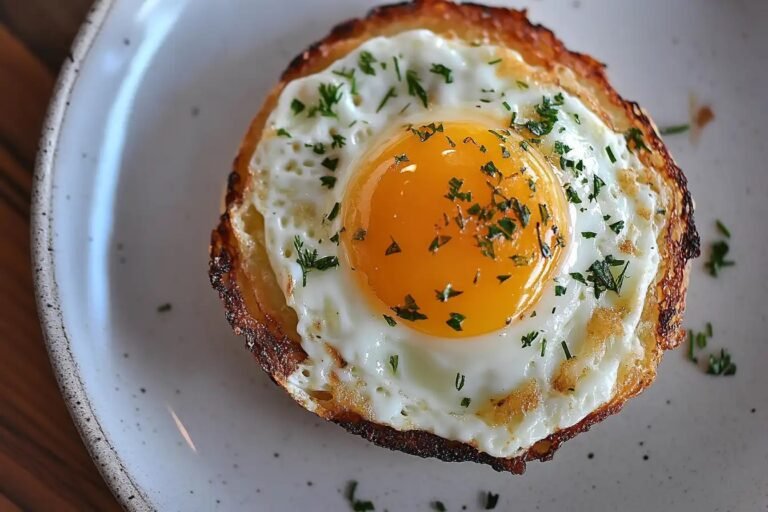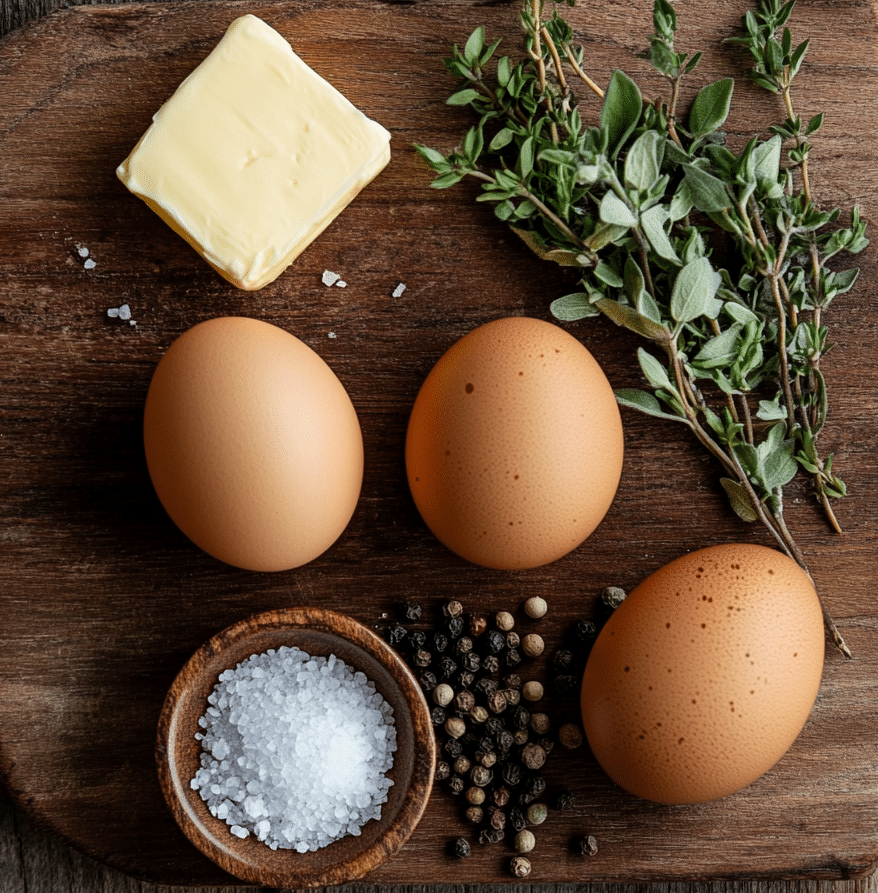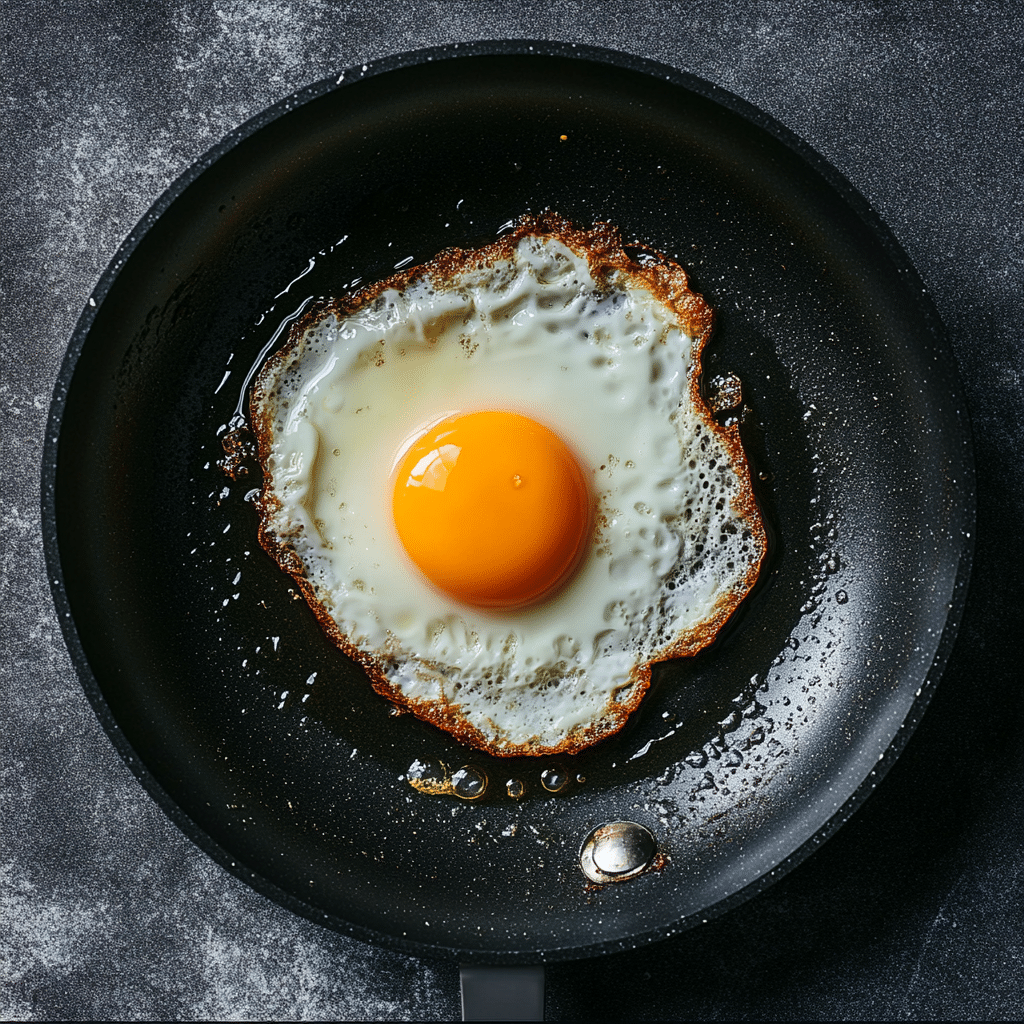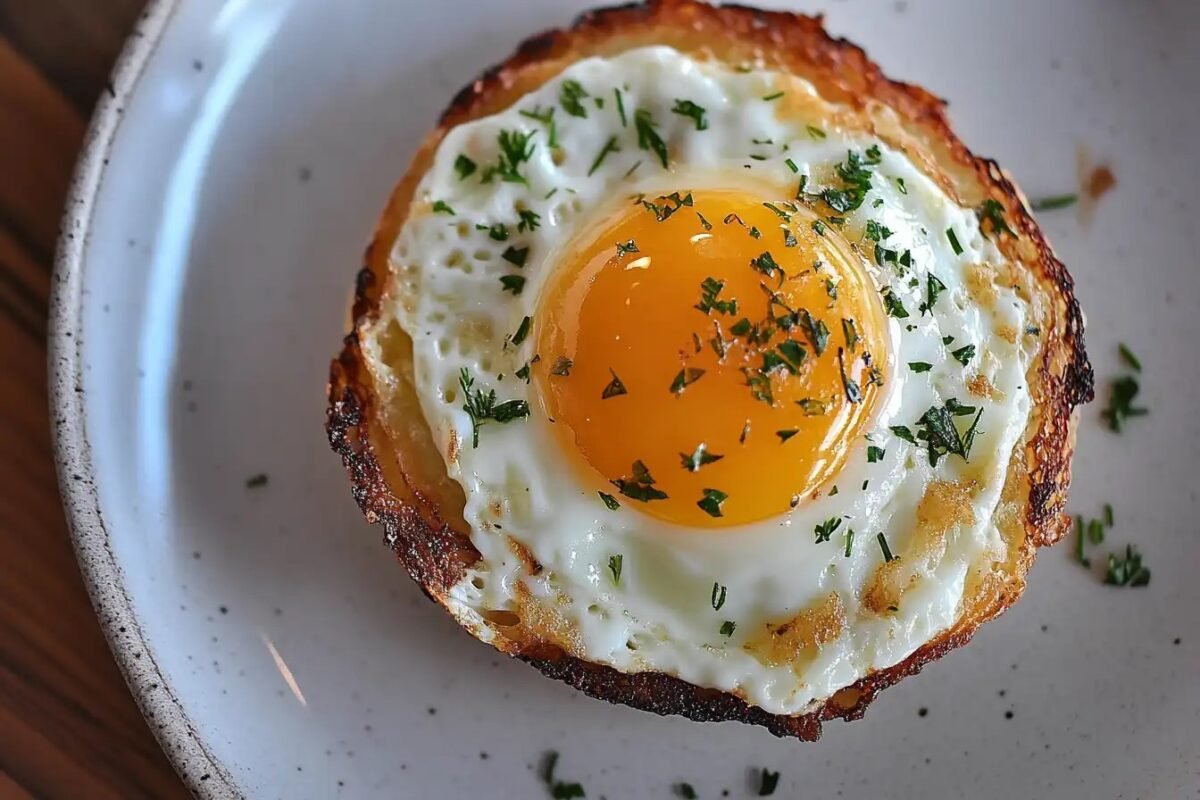Eggs are the unsung heroes of the culinary world—versatile, nutritious, and delicious! Among the countless ways to prepare them, fried eggs hold a special place. Whether you’re craving a classic sunny-side-up egg, a crispy-edged over-easy delight, or a flavorful spicy twist, this guide has it all. We’ll walk you through every step of creating the perfect egg fry recipe, covering tips, tricks, variations, and even some pro chef secrets. By the end, you’ll be frying eggs like a seasoned chef!
Introduction to Fried Eggs
Why Fried Eggs Are a Staple
Fried eggs are a breakfast icon, but their charm goes beyond morning meals. They’re a quick, hearty, and protein-packed addition to almost any dish, from rice bowls to toast. People love them for their simplicity, yet perfecting a fried egg is a skill that can take your cooking to the next level. With just a few ingredients and some know-how, you can transform eggs into a culinary masterpiece.
Whether you’re in a rush or indulging in a leisurely brunch, fried eggs deliver satisfaction with their crispy edges and golden, runny yolks. This universal comfort food is cherished across cultures, making it a must-know recipe for every home cook.
The Basics of a Perfect Fried Egg
The secret to nailing the perfect fried egg lies in balancing heat, fat, and timing. Here’s what makes a fried egg stand out:
- Crisp edges: Achieved by using the right amount of oil or butter and cooking at just the right temperature.
- Soft yolks: Whether you like them runny or fully cooked, yolks are the centerpiece of a fried egg.
- No sticking: The right pan and a little patience ensure your egg slides right out without a hitch.
A fried egg isn’t just food; it’s an art. With a sprinkle of seasoning and a dash of creativity, you can turn this humble dish into a culinary delight. Keep reading to uncover the tools, techniques, and variations to perfect your egg fry recipe!
Print
Egg Fry Recipe: The Ultimate Guide for Perfect Crispy Eggs
Quick and flavorful egg fry recipe made with crispy edges, runny yolks, and flexible styles like sunny side up and over-easy.
- Total Time: 10 mins
- Yield: 2 servings 1x
Ingredients
2 fresh eggs
1 tsp butter or oil
Salt to taste
Black pepper to taste
Optional: chopped parsley, chili flakes
Instructions
1. Crack eggs into a small bowl to check freshness.
2. Heat skillet over medium heat and add butter or oil.
3. Once melted, gently pour the egg into the pan.
4. Cook for 2–3 minutes for sunny-side-up, or flip for over-easy and cook another 10–30 seconds.
5. Season with salt and pepper, then serve hot.
Notes
For crispier edges, use oil and a hot pan.
Use a non-stick or cast-iron skillet to avoid sticking.
Cracking eggs into a bowl prevents shell fragments.
Season eggs just before serving to avoid watery whites.
- Prep Time: 5 mins
- Cook Time: 5 mins
- Category: Breakfast
- Method: Frying
- Cuisine: American
- Diet: Vegetarian
Nutrition
- Serving Size: 1 egg
- Calories: 90
- Sugar: 0g
- Sodium: 95mg
- Fat: 7g
- Saturated Fat: 2g
- Unsaturated Fat: 4g
- Trans Fat: 0g
- Carbohydrates: 0g
- Fiber: 0g
- Protein: 6g
- Cholesterol: 185mg
Essential Tools and Ingredients

Kitchen Tools Needed for Frying Eggs
Cooking the perfect fried egg starts with the right tools. A non-stick skillet is a must—it prevents sticking and ensures even cooking. If you prefer a crispy edge, a cast-iron pan works wonders. Use a flat, heat-resistant spatula for flipping without breaking the yolk. Measuring spoons are handy for precise amounts of oil or butter, and a small bowl is great for cracking eggs to avoid shells in your pan.
Key Ingredients for the Best Fried Eggs
While fried eggs require only a few ingredients, their quality makes a big difference. Start with fresh eggs; their yolks are vibrant and firm. Choose a fat for frying—butter adds richness, while oil like olive or avocado provides a neutral flavor with a crispier finish. Don’t forget a pinch of salt and pepper to season your egg fry recipe. For a gourmet twist, sprinkle herbs like chives or parsley or use finishing salts like smoked sea salt.
Want more ideas for flavoring eggs? Check out this guide on flavorful additions for inspiration!
Step-by-Step Guide to Frying Eggs

Preparation: Setting Up Your Ingredients
Before you start frying, gather all your tools and ingredients. Crack your eggs into a small bowl to avoid any surprises like shells or bad eggs. Preheat your skillet over medium heat—this step ensures your fat melts evenly, creating a non-stick surface. Have your salt, pepper, and any garnishes ready for quick seasoning.
How to Fry Eggs Step by Step
- Heat the Pan: Place your skillet over medium heat and add a teaspoon of butter or oil. Let it melt completely.
- Add the Egg: Pour the egg gently into the skillet, aiming for the center to keep it from spreading too much.
- Cook to Your Liking: For sunny-side-up eggs, cook until the whites set. If you prefer over-easy or over-medium, flip carefully with a spatula and cook an additional 10–30 seconds.
- Season and Serve: Sprinkle salt and pepper, then slide the egg onto a plate or your chosen dish.
Variations: Sunny Side Up, Over Easy, Over Medium, and Over Hard
- Sunny Side Up: The yolk remains visible and runny, perfect for dipping bread.
- Over Easy: Flipped briefly, leaving the yolk still soft.
- Over Medium: Flipped and cooked until the yolk is partially set but still a bit creamy.
- Over Hard: Fully cooked yolk, ideal for those who prefer no runniness.
Each style offers unique textures and flavors to enhance your egg fry recipe. Experiment with these to find your favorite!
Tips and Tricks for Perfect Fried Eggs
Choosing Between Oil or Butter
When it comes to frying eggs, the choice of fat can transform your dish. Butter gives fried eggs a rich, creamy flavor and beautifully golden edges. On the other hand, oil, especially olive or avocado oil, delivers a lighter, crispier texture. Want a balance? Try using both! Start with a teaspoon of butter for flavor, then add a drizzle of oil to prevent it from burning at higher temperatures.
For a healthier twist on your egg fry recipe, consider using a non-stick spray or a small amount of coconut oil.
Heat Control for Even Cooking
The secret to evenly cooked fried eggs is mastering heat control. Medium heat is your best friend—it’s hot enough to cook the whites without overcooking the yolk. Too high, and you’ll risk rubbery whites or burnt edges; too low, and the egg may stick. A good tip? Test the heat by adding a drop of water to the pan—it should sizzle gently.
Common Mistakes and How to Avoid Them
- Cracking Directly Into the Pan: This can lead to broken yolks or unwanted shells. Always crack into a small bowl first.
- Skipping Preheat: Starting with a cold pan can result in sticking. Give your skillet a minute to warm up.
- Overcrowding the Pan: Cooking multiple eggs at once can lower the temperature and lead to uneven results. Fry one or two at a time for the best outcome.
Pro Tip: Season your eggs just before serving. Adding salt too early can create watery whites, affecting the texture.
Creative Fried Egg Recipes
Spicy Masala Egg Fry
Take your egg fry recipe up a notch with a spicy masala twist! Heat a tablespoon of oil, add chopped onions, green chilies, and a pinch of turmeric. Crack the egg into the pan, letting the whites set slightly before adding a sprinkle of garam masala and paprika. Garnish with fresh cilantro for a vibrant, flavorful dish.
Classic American Breakfast with Fried Eggs
Nothing beats the comfort of a classic breakfast. Pair sunny-side-up fried eggs with crispy bacon, buttered toast, and a side of hash browns. The crispy edges of the egg contrast beautifully with the creamy yolk, making every bite a delight.
For a detailed guide to creating a hearty breakfast spread, consider exploring other breakfast recipes on Quinto Recipes.
Asian-Inspired Egg Fry Variations
Try an Asian spin on fried eggs by cooking them in sesame oil and soy sauce. After flipping, drizzle a touch of hoisin or oyster sauce for added umami. Sprinkle sesame seeds and scallions on top, and serve over steamed jasmine rice or noodles for a quick yet satisfying meal.
For more culinary inspiration, check out Quinto Recipes’ creative takes on international flavors in dishes like Alfredo Marinara Pink Sauce.
Health and Nutritional Benefits of Fried Eggs
Nutritional Value of Fried Eggs
Fried eggs are not just delicious—they’re packed with nutrients, making them a great addition to your diet. A single egg contains about 6 grams of high-quality protein, which is essential for muscle repair and growth. They’re also rich in vitamins like B12, A, and D, which support energy levels, eye health, and bone strength. The yolk is a powerhouse of healthy fats and choline, a nutrient that’s great for brain function.
However, the nutritional value of your egg fry recipe can vary based on the type of fat used. Cooking with olive oil or avocado oil can boost your intake of heart-healthy monounsaturated fats. If you’re aiming for a lighter dish, opt for non-stick spray or use minimal butter.
Tips for a Healthier Fry
To make your fried eggs healthier:
- Use a non-stick pan to reduce the need for excess oil or butter.
- Avoid overcooking, as this can deplete some of the vitamins.
- Pair fried eggs with nutrient-dense sides like whole-grain toast, avocado slices, or sautéed greens.
Adding fried eggs to your meals is a simple way to enjoy a protein-rich, wholesome dish without compromising on taste.
for more recipes follow our facebook page
Conclusion
Recap of the Egg Fry Process
From choosing the perfect pan to mastering heat control, creating the ultimate egg fry recipe is as much about technique as it is about creativity. Whether you’re cooking sunny side up, over easy, or adding a gourmet twist with spices and sauces, fried eggs are an accessible, versatile, and satisfying dish. By using fresh ingredients, the right tools, and a little patience, you can elevate this simple staple into a culinary delight.
Encouragement to Experiment and Share Recipes
The beauty of fried eggs lies in their adaptability. Experiment with different fats, seasonings, and accompaniments to find your perfect match. Pair your fried eggs with hearty breakfasts, use them as a topping for rice bowls, or enjoy them as a standalone snack. The possibilities are endless!
We’d love to hear about your creations—don’t hesitate to share your unique take on the egg fry recipe. Whether you’re a beginner or a seasoned chef, this humble yet iconic dish has something for everyone. So grab your skillet and start cracking those eggs!
FAQS
How to Fry an Egg Step by Step?
Perfecting your egg fry recipe is easier than you think! Start by preheating your pan over medium heat and adding a bit of butter or oil. Crack the egg into a small bowl, then gently pour it into the pan. Let the whites set before flipping if needed. Finish with a sprinkle of salt and pepper, and you’re good to go!
Is It Best to Fry Eggs in Oil or Butter?
This depends on your flavor preference. Butter adds a rich, savory taste and golden edges, while oil offers a lighter, crispier texture. For a balanced approach, try using both.
What Are the 4 Types of Fried Eggs?
The main types of fried eggs are:
Sunny Side Up: Whites are set, yolk remains visible and runny.
Over Easy: Lightly flipped, yolk still soft.
Over Medium: Flipped with a slightly set yolk.
Over Hard: Fully cooked yolk, perfect for those who prefer no runniness.
How Does Gordon Ramsay Make the Perfect Fried Egg?
Chef Gordon Ramsay suggests cooking eggs over medium heat, using a touch of butter for richness. He seasons them at the end to keep the whites firm and flavorful, ensuring a perfectly cooked yolk every time.
